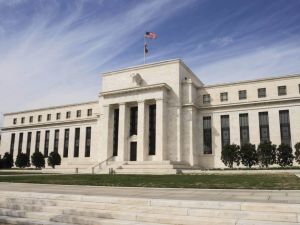Richard Flax, Chief Investment Officer
The Prime Minister survived a vote of confidence by Conservative MPs, defeating an attempted coup from within the party by 200 votes to 117.
Theresa May now goes to Europe to seek the “legal and political” assurances she needs to get her Brexit deal past parliament, but the huge divides unveiled by the confidence vote reveal the difficult task she has ahead of her.
Whilst May survived the vote, it didn’t come without its sacrifices. The Prime Minister was forced to surrender her position as the leader of the Conservative Party ahead of the 2022 General Election.
The Premiership may still be in the same hands it was yesterday, and no one can threaten this again for 12 months, but uncertainty is still thick in the air.
What happens now
The Prime Minister will now return to delivering her Brexit deal. She still needs to get the bill approved by Parliament and finish negotiating the terms of the divorce. The large chasms within the Conservative Party reveals how hard it will be to unite the party behind her ahead of the crucial, already delayed, Parliament vote.
The Prime Minister will try and persuade fellow EU leaders to give her a better deal, including legal reassurance the Irish backstop won’t become permanent. In this scenario, the UK would be forced into a EU customs union if no agreement is made over a hard border.
Most still believe the Prime Minister would lose a vote on the Brexit deal when it is put to Parliament. If this is the case we believe there are a few scenarios that could play out.
- The deal is voted down and markets wobble: Politicians get nervous and they pass the bill in the second attempt to protect national interest
- Parliament takes control: Some of the amendments will allow parliament to take control of the process (rather than the government). This could prompt a vote on, amongst other things, a second referendum.
- Start preparing for another General Election: Labour brings a vote of no confidence to the government, which they lose and we have a general election early in 2019.
What this means for your investment strategy
Political uncertainty in the UK can spill into volatility in the financial markets, including sterling and UK exposed equities. This can be uncomfortable for investors and make many feel like they have to change something in their portfolio to protect their future goals.
But straying off your long-term investment strategy can cause potentially costly mistakes when trying to time the market.
It’s important to remember that volatility is completely normal – even in the strongest markets on record. Research from JP Morgan shows that on average the S&P 500 falls by around 5% at some point in a quarter, with a drop of 10% likely to happen once a year.
You can easily miss the best days of performance on the market by trying to avoid the worst, the data shows, with financial markets usually rallying after short-term volatility. Although markets can suffer from what seems like a severe sell-off within a calendar year, this usually reverses with the market growing by the end of the six months.
Delegate the hard work to experts
Understanding your investor profile is one of the first steps to reaching your financial goals. Reflecting this through the allocation of assets in your portfolio gives your money the best chance to grow.
If your investment portfolio isn’t built to reflect your risk profile and time horizon, your performance won’t match what you need from your portfolio.
At Moneyfarm, our investment process is based around strategic and tactical asset allocation. Our strategic asset allocation looks over a long-term investment horizon, so we develop forecasts about returns that reflect long-term expectations about the global economy and financial markets.
We also need to think carefully about the way different financial markets interact with each other, as these dynamics are important considerations for building well-diversified portfolios.
Whilst our strategic view looks out to 10 years, we know the journey there won’t necessarily be smooth. To optimise the risk/return profile of our portfolios, we put a tactical overlay on our strategic asset allocation, which is Moneyfarm’s rebalancing process.
My Investment Team monitor the markets on your behalf to ensure your portfolio continues to reflect your appetite for risk. We know that short-term volatility can lead to disappointing performance, but we will continue to stick to our long-term strategy as history shows is the best way to maximise returns over the long-term.
The Investment Committee meets every month to discuss market and economic trends, review risk management and volatility, and make tactical allocations where necessary in line with your appetite for risk.
We understand that we’re managing your money for a more financially secure future, so we work hard to ensure your portfolio reflects your investor risk profile, and that you’re in the best position to reach your goals.





